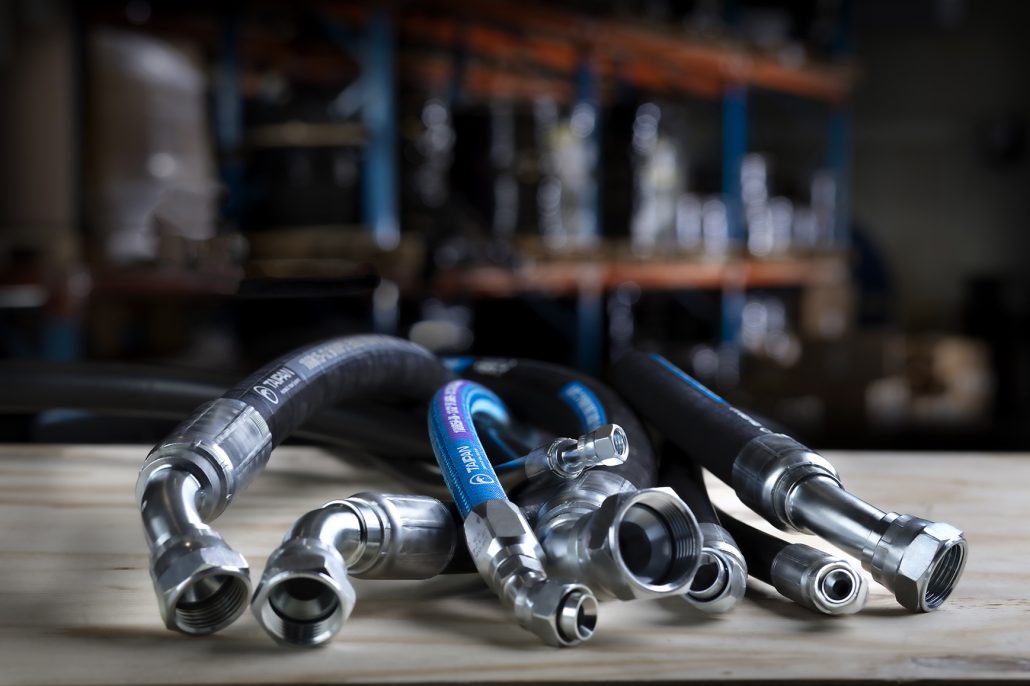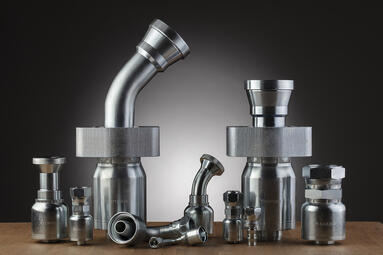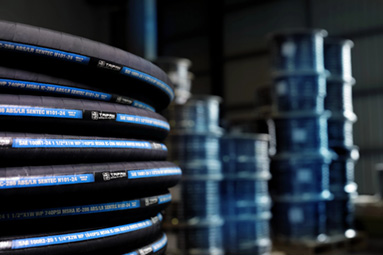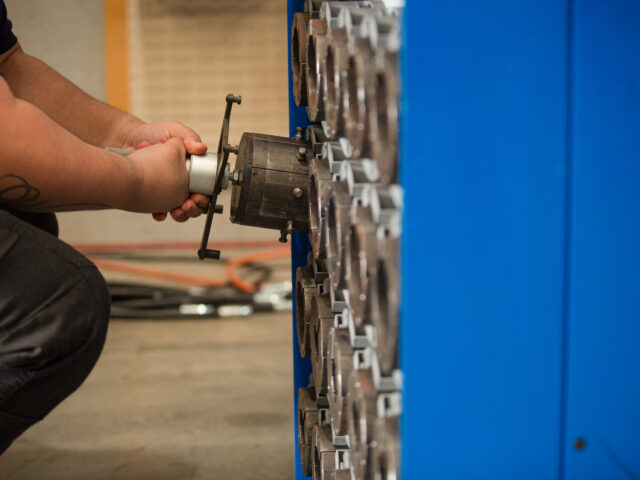THERE ARE PLENTY OF COMPANIES SPRUIKING ABOUT THE NEED TO USE A “MATCHED SYSTEM” BUT WHAT EXACTLY IS SO IMPORTANT, LET’S FACE IT, A HOSE IS A HOSE, RIGHT?……
You could be forgiven for thinking so and I admit for all my years in a breakdown vehicle that was my perception but actually, no, a hose isn’t just a hose. Here is an insight from the engineering end of what we think are just hoses.
There are numerous standards available that the worlds hose manufacturers can comply to including; International (ISO), European (EN) and American (SAE). These standards provide the general detail the manufacturers must adhere to, to be compliant:
- Hose ID/OD

- Over wire dimension
- Cover thickness
- Working pressure
- Burst pressure
- Minimum bend radius
- Fire resistance (not all standards)
- Electrical conductivity (not all standards)
These standards provide the types of tests that need to be performed and when these tests are conducted. It also advises how long the hose shelf life should be.
What the standards don’t do, is tell the manufacturer how to make a hose that can achieve those parameters. It does not tell them anything about the rubber compound or additives needed, nor the wire thickness, type, number of braid strands, angle of weave or strength.
Rubber Compound
Details of rubber compounds are generally commercial secrets that manufacturers do not give out or make publicly available. A little like KFC – you don’t know the recipe you just know it tastes good.
The way a hose works in any given environment is determined by those secret ingredients which has an effect on the hardness, pliability, UV resistance and bend radius etc of the rubber compound and accordingly the way it reacts when you crimp a hose tail on. For example, high temperature hose compounds are generally softer, so achieving tail collapse is not a good indicator of the correct crimp dimension. In fact, if you do go by the tail collapse theory you will more likely crush the liner to a point of cracking and leakage.
Cover Thickness
If the manufacturer makes the cover of the hose to the higher end of the allowance within the standard (a thick outer cover) and this is usually very generous, there may not be enough room between the teeth of the ferrule to allow for the dispersion of the outer cover rubber and at the same time grip onto the hose reinforcing. In this situation the result more often leads to the hose tail blowing off regardless of the amount of tail collapse you may have achieved.
If the cover is too thin the barbs bite through the wire and may even cut the wire before achieving tail collapse. Without the correct thickness of cover, the barbs of the ferrule may be too aggressive and even if the wire is not cut, may apply too much pressure to the liner through the wire and crush it excessively also causing failure.
The types of failures caused by the above problems do not always result in immediate failure, rather they will severely reduce the life of the hose.
Hose Tail And Shell Design
The hose tail and shell design are generally laid out in the relevant ISO standards (ISO 12151 etc), but this is limited to the dimensional requirements, for example: the overall hose tail length, drop length of 90 degree, thickness of the tube nut sizes etc.
The standards do not tell the manufacturer what type of steel to use, how to heat treat (if required) or method to be used. These standards give no information to the manufacturer on the length or shape of the shell or even the number of teeth in the shell. This design work is all up to the manufacturer and can vary considerably from brand to brand.
The moral of the story is, it is only through rigorous testing by the manufacturer using internationally accepted test methods in accordance with (IAW) AS1180, and when you are talking Taipan, not only the manufacturer tests but third party tests and the use of burst testing (AS1180) and impulse testing (tested IAW ISO 6803), that we can guarantee you our product will have a long and serviceable life and live up to the standards and environment it is designed to meet.



